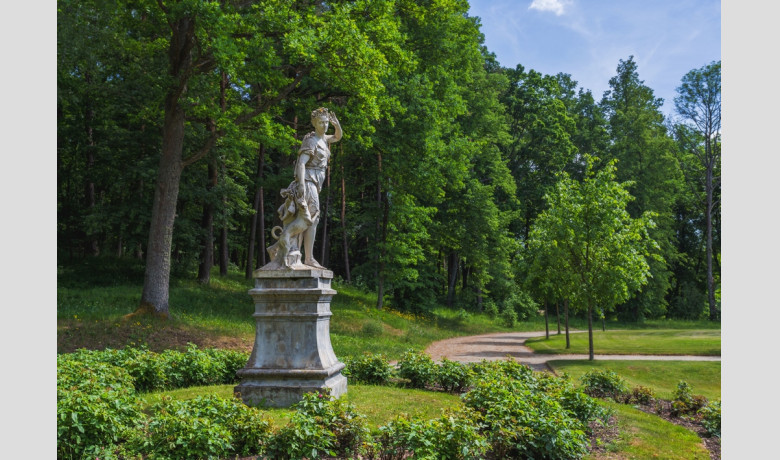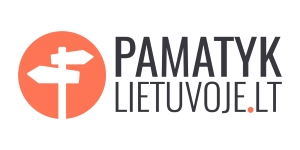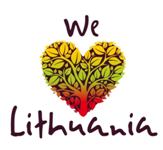Next to the Užutrakis Palace, E.F. Andre designed two representative parterres with a regular plan. The main (eastern) parterre of Užutrakis Park was elliptical in shape with a bordered path, highlighted by ornate ornamental flower beds and sculptural accents.
The large parterre was decorated with copies of the sculptures of the 18th century Pantuzian sculptor A. Coysevox, and depicts the Roman goddesses Diana and Flora and the nymph Hamadryade.
Before winter came, all the sculptures in the park would be covered with wooden boxes to protect them from the change in weather. As the First World War approached, sculptures, silverware and trinkets were buried in the ground, so they stayed safe until their owners returned. Even during the war, the vases remained still standing in their places. The situation was completely different after the Second World War. The sculptures were smashed to smithereens, so only memories of their former splendor remained.
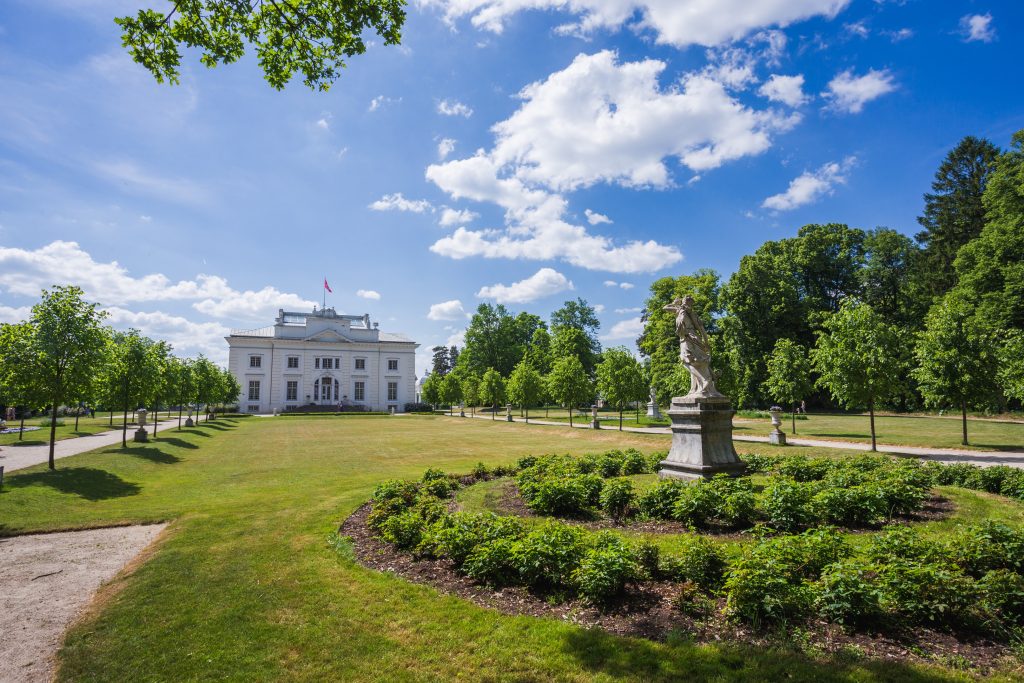
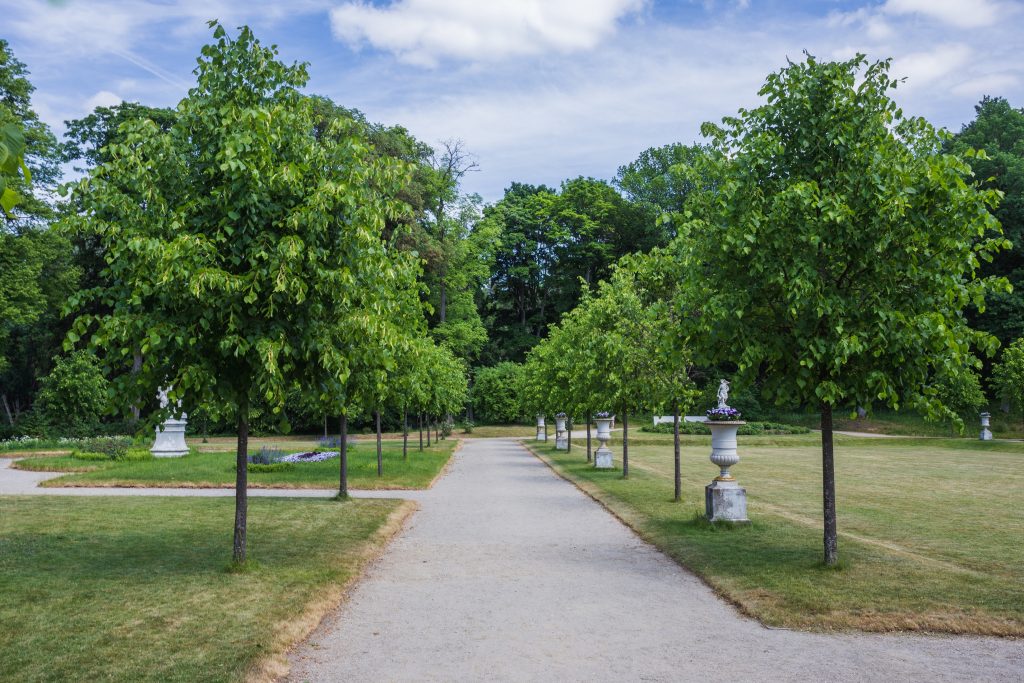
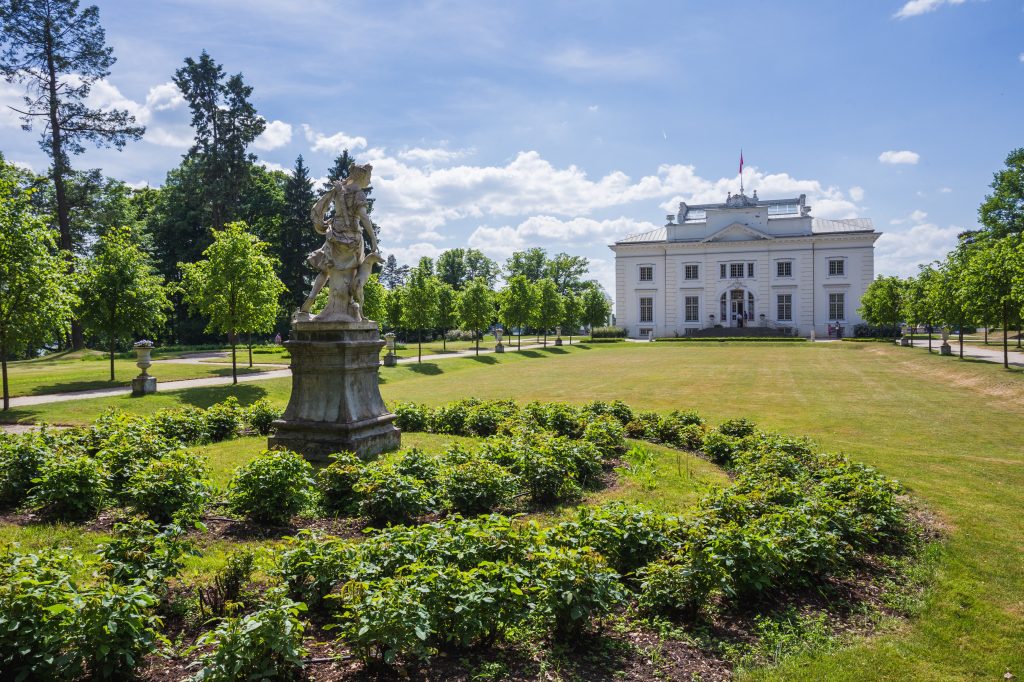
At the beginning of the revival, the manor had no owner, so it was neglected, vandalized and looted. During the time of Lithuanian independence, when the estate was taken care of by the Directorate of the Trakai Historical National Park, the antique sculptures of Užutrakis Manor Park, were recreated from cast marble by sculptors Rūta and Nerijus Kavaliauskai who worked from surviving photographs and the original sculptures stored in the Louvre.
Nerijus Kavaliauskas can be called the sculptor of Užutrakis Manor. His hands restored many of the important highlights of the manor house. Step by step, the sculptor progressively restored the vases and sculptures that decorated the park, starting with the vases and kraters of the eastern parterre. The valuable cultural heritage of the Counts Tiškevičiai, who loved French elegance and chic, was mercilessly destroyed during the Soviet era. It took ten years of painstaking searching throughout the country and abroad to restore this valuable heritage down to the smallest detail. For example, researchers watched the legendary film of the Lithuanian Film Studio “No One Wanted to Die”, to discover what the vases decorating the parterre looked like, as some scenes were shot in the park before the vases were broken.
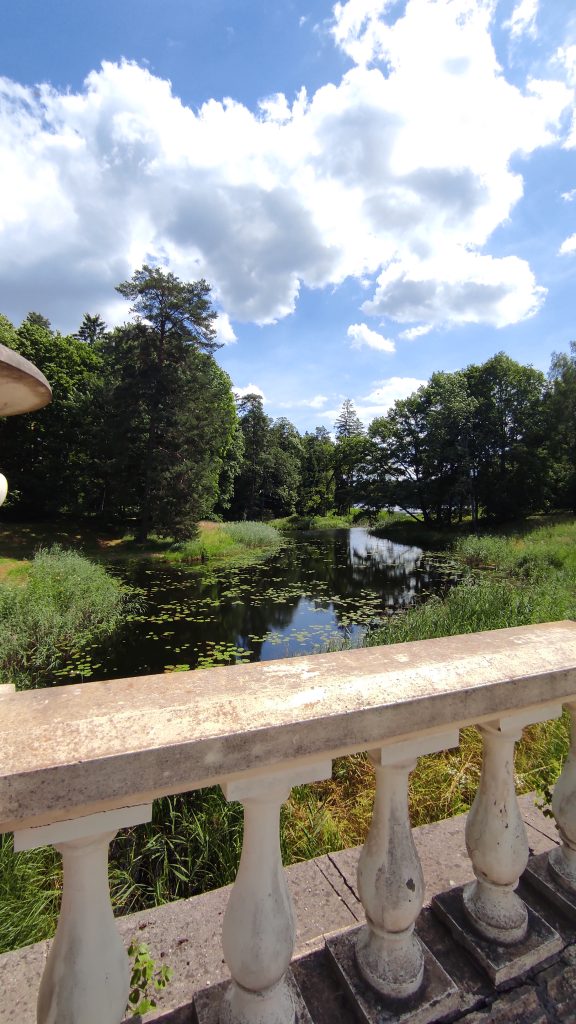
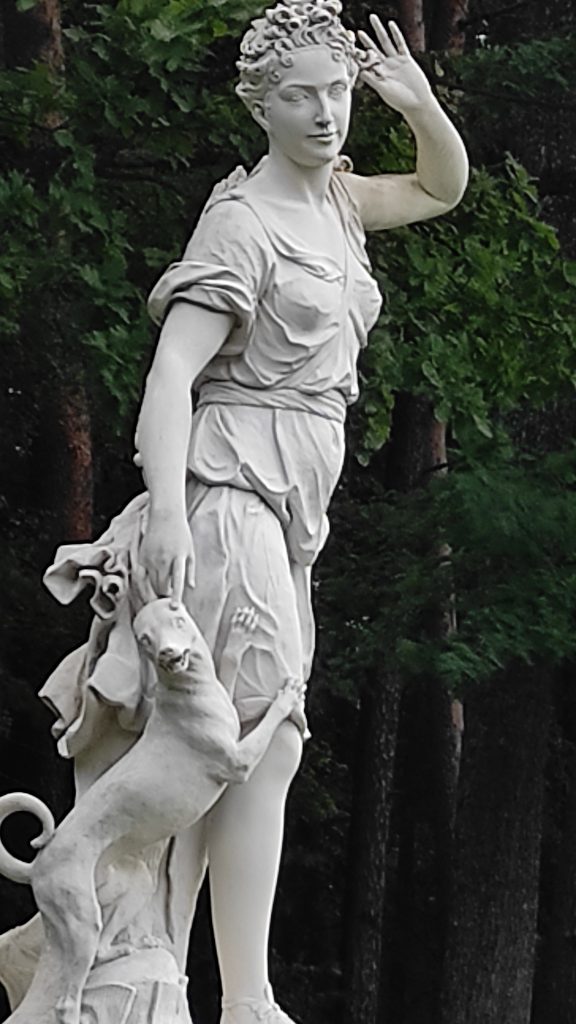
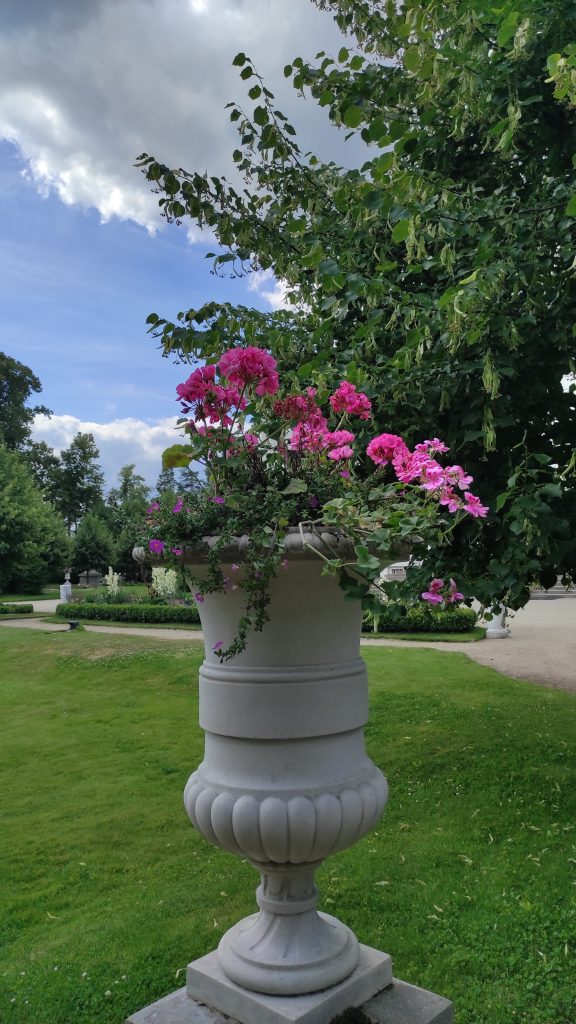
The biggest challenge was to accurately restore the sculptures of Diana and Flora. Only the pedestals remained as the beautiful deities who adorned the park had been replaced by statues of Lenin and Stalin after the war. Lenin quietly disappeared from Užutrakis only during the Revival period and there were initially no archival records of what figures had stood on the pedestals before.
searches often resembled detective stories. Finally, the mystery of Diana’s sculpture was partially solved by representatives of the Karaite community of Trakai. Lidija Maškevič, a resident of Trakai, showed a photo from her album of 1940, in which the young Karaites of Trakai and Panevėžys worshiped an unseen deity. However, this deity still could not be identified.
The park staff spent almost a month digging through all possible museum and library archives, but found nothing. They also turned to the Internet, trying to find a thread that would reveal the history of the sculptures.
At last, one day they experienced a real triumph. They found a sculpture identical to the Thracian on the Biltmore Landscape Park website in the United States. The assumptions were confirmed – the missing statue was Diana, copied from a statue which is kept in the Louvre.
Now a new sculpture of the goddess Diana (g the patroness of nature, flora and fauna, beasts, birds and forests) stands at the end of the eastern parterre. The original sculpture was created by the famous French sculptor Antoine Coysevox and is kept in the Louvre Museum in Paris. The original model for the statue was Maria Adelaide de Savoya– Princess of Burgundy and mother of King Louis XV of France.
